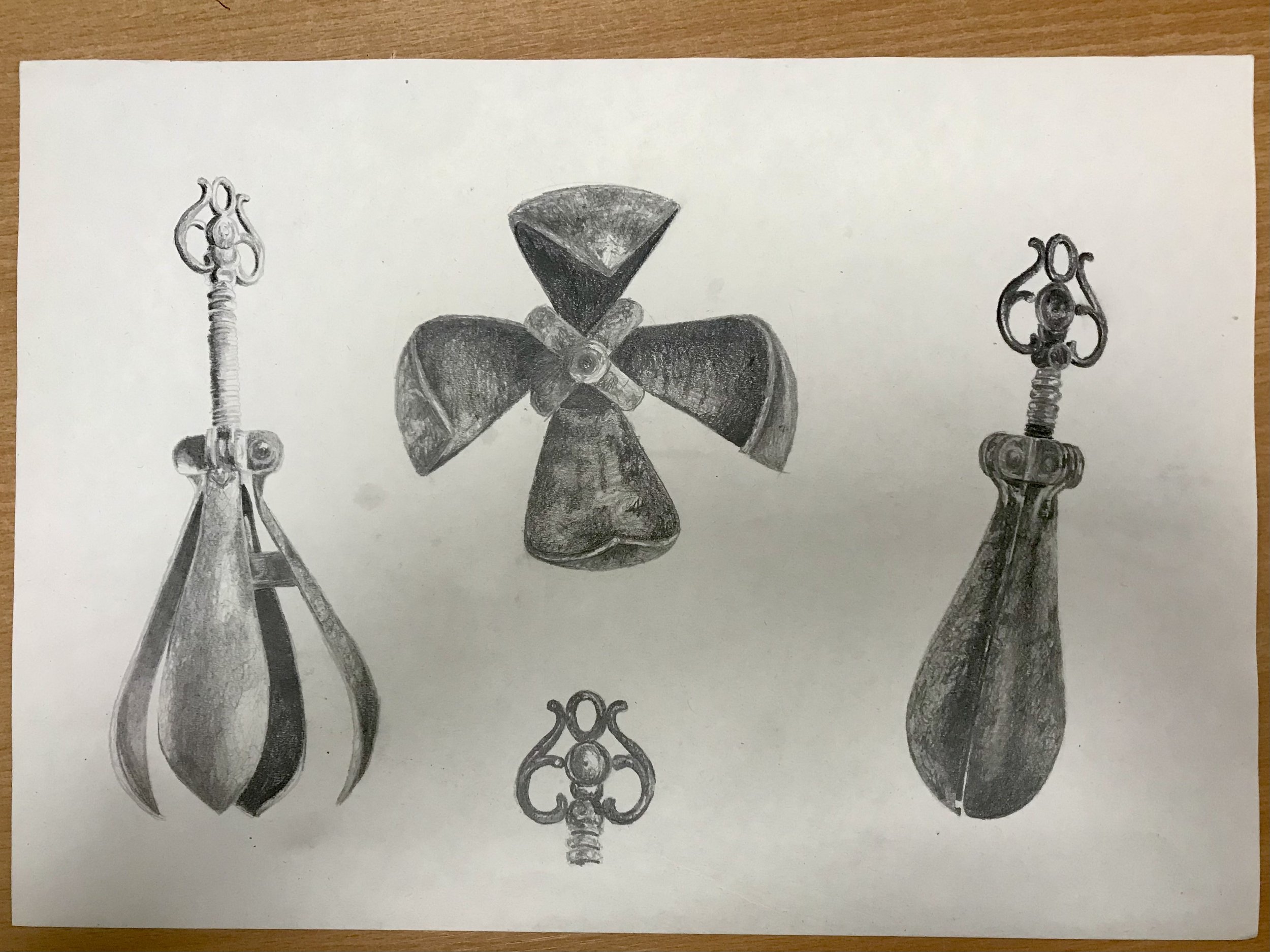
Forged replica of the Salzburg Pear of Anguish, a supposed medieval torture device. Created by hand using the same methods and techniques as the original object.
Scroll ↓
View of the proposed bottom mechanism.
Bespoke tooling was forged prior to beginning the build as the original Pear utilised an obsolete Austrian unit of measurement called ‘Linie’. Once the metric system became mandatory in Austria in 1876, no other system was legal throughout the Austro-Hungarian territory and so the use of the ‘linie’ as a measuring system fell into disuse. This is quite interesting in itself but it will also give the original Pear an ante-quem date of 1876.
Close up of the hand-filed thread.
The Salzburg Pear of Anguish is an intricately decorated object with seemingly simple mechanics. It demonstrates the talent of a crafts person that has honed their skills over many years. In particular, the delicate decoration of the spindle and the precision of the thread champion the makers ability in a way that was incredibly difficult to replicate.
The suggestions made regarding the completion of the mechanism have been proposed from a correlation of methods seen in other existing examples. It is possible the original was never finished as it was intended only for display as part of a torture chamber exhibition in Austria.
Without seeing the object in person, I can only determine and assume my methodology from research, historical context, pictures and communication with Maximillian Bertet (the Salzburg Museum conservator for archaeological objects). The techniques of construction and methods of making the Pear are reasonable assumptions based on experimentation and resonant demarcation from the original maker.
Despite the speculation surrounding the origins of its story and the mystery around the legitimacy of its function, the Pear of Anguish is a staple for any self-respecting torture chamber that aims to delight an audience with embellished tales of a grotesque medieval period.
Bespoke clapper dies being used to create the spindle.
Its origins can only be speculated as there are no definitive absolutes on the Pear. The obsoletion of the linie as unit of measurement gives the Pear an ante-quem date of 1876, while the common method for hand filing threads occurred before the cutting lathe was developed in 1770. Although the Pear likely came from a donation to the museum from Mayor Ott in 1917 when a ‘Folterkammer’ (torture chamber) was installed as part of an exhibition, the quality and the fineness of the ironwork suggests it was made in the 17th or 18th century.
The full academic paper for the Salzburg Pear of Anguish project is available on request, contact here.
Hand-drawn technical drawing o the original Pear. Blue indicates an existing element that has been modified to accommodate the missing mechanism, while green displays new proposed elements to allow the pear to function.


